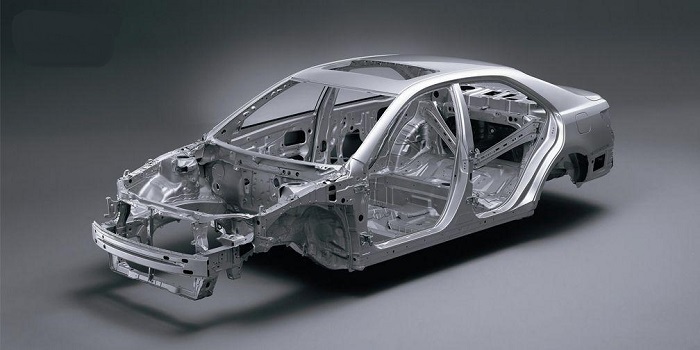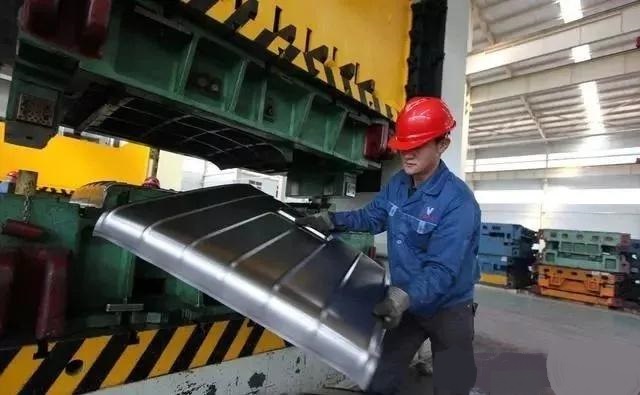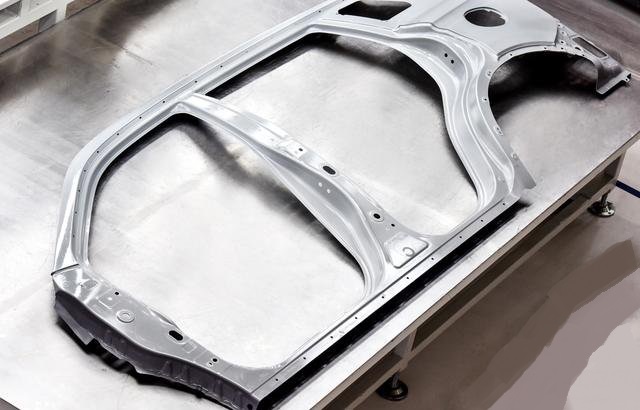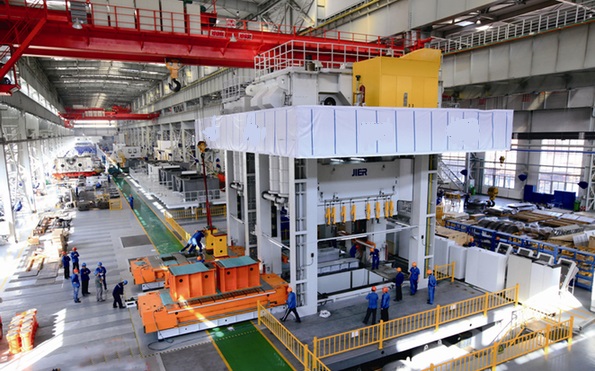Cars have been called “machines that changed the world.” Because the automobile industry has a strong industrial correlation, it is regarded as an important symbol of a country’s economic development level. There are four major processes in automobiles, and the stamping process is the most important of the four major processes. And it is also the first of the four major processes.
In this article, we will highlight the stamping process in automobile manufacturing.
Table of Content:
- What is Stamping?
- Stamping Die
- Stamping Equipment
- Stamping Material
- Gauge
1. What is Stamping?
1) The definition of stamping
Stamping is a forming processing method that applies external force to plates, strips, pipes, and profiles by presses and molds to cause plastic deformation or separation to obtain workpieces (stamping parts) of the required shape and size. Stamping and forging belong to plastic processing (or pressure processing). The blanks for stamping are mainly hot-rolled and cold-rolled steel sheets and strips. Among the steel products in the world, 60-70% are plates, most of which are stamped into finished products.
The body, chassis, fuel tank, radiator fins of the car, the steam drum of the boiler, the shell of the container, the iron core silicon steel sheet of the motor and electrical appliances, etc. are all stamped. There are also a large number of stamping parts in products such as instruments and meters, household appliances, bicycles, office machinery, and living utensils.
2) Stamping process characteristics
- Stamping is a processing method with high production efficiency and low material consumption.
- The stamping process is suitable for the production of large batches of parts and products, which is easy to realize mechanization and automation, and has high production efficiency. At the same time, stamping production can not only strive to achieve less waste and no waste production but even if there are leftovers in some cases, they can also be fully utilized.
- The operation process is convenient. No high level of skill is required by the operator.
- The stamped parts generally do not need to be machined and have high dimensional accuracy.
- Stamping parts have good interchangeability. The stamping process has good stability, and the same batch of stamping parts can be used interchangeably without affecting assembly and product performance.
- Since stamping parts are made of sheet metal, their surface quality is better, which provides convenient conditions for subsequent surface treatment processes (such as electroplating and painting).
- Stamping processing can obtain parts with high strength, high rigidity, and lightweight.
- The cost of stamping parts mass-produced with molds is low.
- Stamping can produce parts with complex shapes that are difficult to process by other metal processing methods.
3) Stamping process
(1) Separation process:
The sheet is separated along a certain contour line under the action of external force to obtain finished and semi-finished products with a certain shape, size, and cut-off quality.
Separation condition: The stress inside the deformed material exceeds the strength limit σb.
a. Blanking: Use a die to cut along a closed curve, and the punched part is a part. Used to make flat parts of various shapes.
b. Punching: Use a die to punch along a closed curve, and the punched part is waste. There are several forms such as positive punching, side punching, and hanging punching.
c. Trimming: Trimming or cutting the edges of formed parts to a certain shape.
d. Separation: Use a die to punch along an unclosed curve to produce separation. When the left and right parts are formed together, the separation process is used more.
(2) Forming process:
The blank is plastically deformed without breaking to obtain finished and semi-finished products of a certain shape and size.
Forming conditions: yield strength σS<material internal stress<strength limit σb.
a. Drawing: Forming the sheet blank into various open hollow parts.
b. Flange: The edge of the sheet or semi-finished product is formed into a vertical edge along a certain curve according to a certain curvature.
c. Shaping: A forming method used to improve the dimensional accuracy of formed parts or obtain a small fillet radius.
d. Flipping: A standing edge is made on a pre-punched sheet or semi-finished product or on an unpunched sheet.
e. Bending: Bending the sheet into various shapes along a straight line can process parts with extremely complex shapes.
2. Stamping Die
1) Die classification
According to the working principle, it can be divided into: drawing die, trimming punching die, and flanging shaping die.
2) The basic structure of the mold
The punching die is usually composed of upper and lower dies (convex and concave die).
3) Composition:
Working part
Guiding
Positioning
Limiting
Elastic element
Lifting and turning
3. Stamping Equipment
1) Press Machine
According to the bed structure, presses can be divided into two types: open presses and closed presses.
The open press is open on three sides, the bed is C-shaped, and the rigidity is poor. It is generally used for small presses. The closed press is open at the front and back, the bed is closed, and the rigidity is good. It is generally used for large and medium-sized presses.
According to the type of driving slider force, the press can be divided into mechanical press and hydraulic press.
2) Uncoiling line
Shearing machine
The shearing machine is mainly used to cut straight edges of various sizes of metal sheets. The transmission forms are mechanical and hydraulic.
4. Stamping Material
Stamping material is an important factor affecting part quality and die life. At present, the materials that can be stamped are not only low-carbon steel but also stainless steel, aluminum and aluminum alloy, copper and copper alloy, etc.
Steel plate is currently the most widely used raw material in automobile stamping. At present, with the requirement for lightweight car bodies, new materials such as high-strength steel plates and sandwich steel plates are increasingly used in car bodies.
Steel plate classification
According to thickness: thick plate (above 4mm), medium plate (3-4mm), thin plate (below 3mm). Auto body stamping parts are mainly thin plates.
According to the rolling state: hot-rolled steel plate, cold-rolled steel plate.
Hot rolling is to soften the material at a temperature higher than the recrystallization temperature of the alloy. And then press the material into a thin sheet or a cross-section of a billet with a pressure wheel, so that the material is deformed, but the physical properties of the material remain unchanged. The toughness and surface smoothness of hot-rolled plates are poor, and the price is relatively low. The hot rolling process is rough and cannot roll very thin steel.
Cold rolling is the process of further rolling the material with a pressure wheel at a temperature lower than the recrystallization temperature of the alloy to allow the material to recrystallize after hot rolling, depitting, and oxidation processes. After repeated cold pressing-recrystallization-annealing-cold pressing (repeated 2 to 3 times), the metal in the material undergoes a molecular level change (recrystallization), and the physical properties of the formed alloy change. Therefore, its surface quality is good, the finish is high, the product size precision is high, and the performance and organization of the product can meet some special requirements for use.
Cold-rolled steel plates mainly include cold-rolled carbon steel plates, cold-rolled low-carbon steel plates, cold-rolled steel plates for stamping, high-strength cold-rolled steel plates, etc.
5. Gauge
A gauge is a special inspection equipment used to measure and evaluate the dimensional quality of parts.
In automobile manufacturing, no matter for large stamping parts, interior parts, welding sub-assemblies with complex spatial geometry, or for simple small stamping parts, interior parts, etc., special inspection tools are often used as the main detection means, used to control the product quality between processes.
Gauge detection has the advantages of rapidity, accuracy, intuition, convenience, etc., and is especially suitable for the needs of mass production.
Gages often consist of three parts:
① Skeleton and base part
② Body part
③ Functional parts (functional parts include: quick chuck, positioning pin, detection pin, movable gap slider, measuring table, profile clamping plate, etc.).
That’s all there is to know about the stamping process in car manufacturing. Zhengxi is a professional manufacturer of hydraulic presses, providing professional stamping equipment, such as deep drawing hydraulic presses. In addition, we supply hydraulic presses for automotive interior parts. If you have any needs, please contact us.
Post time: Jul-06-2023










